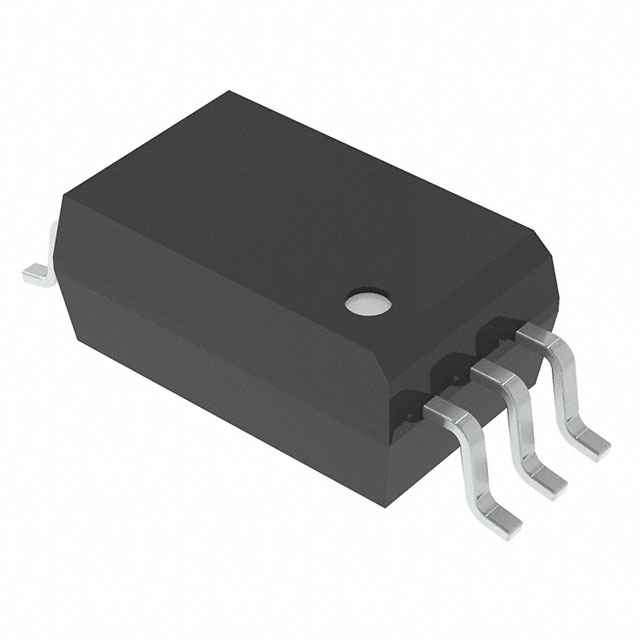
UCC23513BQDWYQ1
ActiveAUTOMOTIVE 5.7KVRMS,4A/5A SINGLE-CHANNEL OPTO-COMPATIBLE ISOLATED GATE DRIVER WITH 8V/12V UVLO
Deep-Dive with AI
Search across all available documentation for this part.

UCC23513BQDWYQ1
ActiveAUTOMOTIVE 5.7KVRMS,4A/5A SINGLE-CHANNEL OPTO-COMPATIBLE ISOLATED GATE DRIVER WITH 8V/12V UVLO
Technical Specifications
Parameters and characteristics for this part
| Specification | UCC23513BQDWYQ1 |
|---|---|
| Approval Agency | UL, VDE |
| Common Mode Transient Immunity (Min) [Min] | 150 kV/µs |
| Current - DC Forward (If) (Max) [Max] | 25 mA |
| Current - Output High, Low [custom] | 3 A |
| Current - Output High, Low [custom] | 3.5 A |
| Current - Peak Output | 5.3 A, 4.5 A |
| Grade | Automotive |
| Mounting Type | Surface Mount |
| Number of Channels | 1 |
| Operating Temperature [Max] | 125 °C |
| Operating Temperature [Min] | -40 °C |
| Package / Case | 6-SOIC |
| Package / Case [x] | 0.295 in |
| Package / Case [y] | 7.5 mm |
| Propagation Delay tpLH / tpHL (Max) [Max] [custom] | 105 ns |
| Propagation Delay tpLH / tpHL (Max) [Max] [custom] | 105 ns |
| Pulse Width Distortion (Max) [Max] | 35 ns |
| Qualification | AEC-Q100 |
| Rise / Fall Time (Typ) | 28 ns, 25 ns |
| Supplier Device Package | 6-SOIC |
| Technology | Capacitive Coupling |
| Voltage - Forward (Vf) (Typ) | 2.1 V |
| Voltage - Isolation | 5700 Vrms |
| Voltage - Output Supply [Max] | 33 V |
| Voltage - Output Supply [Min] | 14 V |
Pricing
Prices provided here are for design reference only. For realtime values and availability, please visit the distributors directly
| Distributor | Package | Quantity | $ | |
|---|---|---|---|---|
| Digikey | Tube | 1 | $ 3.51 | |
| 10 | $ 3.15 | |||
| 25 | $ 2.98 | |||
| 100 | $ 2.58 | |||
| 300 | $ 2.45 | |||
| 500 | $ 2.20 | |||
| 1000 | $ 1.86 | |||
| 2500 | $ 1.76 | |||
| 5000 | $ 1.70 | |||
| Texas Instruments | TUBE | 1 | $ 2.94 | |
| 100 | $ 2.43 | |||
| 250 | $ 1.74 | |||
| 1000 | $ 1.31 | |||
Description
General part information
UCC23513-Q1 Series
The UCC23513-Q1 driverare opto-compatible, single-channel, isolated gate drivers for IGBTs, MOSFETs and SiC MOSFETs, with 4.5-A source and 5.3-A sink peak output current and 5.7-kVRMSisolation rating. The high supply voltage range of 33-V allows the use of bipolar supplies to effectively drive IGBTs and SiC power FETs. UCC23513-Q1 can drive both low side and high side power FETs and bring significant performance and reliability upgrades over opto-coupler based gate drivers while maintaining pin-to-pin compatibility in both schematic and layout design. Performance highlights include high common mode transient immunity (CMTI), low propagation delay, and small pulse width distortion. Tight process control results in small part-to-part skew. The input stage is an emulated diode (e-diode) which means long term reliability and excellent aging characteristics compared to traditional LEDs found in optocoupler gate drivers. High performance and reliability makes them ideal for use in automotivemotor drives such as the traction inverter, on-board chargers, DC charging stations, and automotive HVAC and heating systems. The higher operating temperature opens up opportunities for applications not supported by traditional optocouplers.
The UCC23513-Q1 driverare opto-compatible, single-channel, isolated gate drivers for IGBTs, MOSFETs and SiC MOSFETs, with 4.5-A source and 5.3-A sink peak output current and 5.7-kVRMSisolation rating. The high supply voltage range of 33-V allows the use of bipolar supplies to effectively drive IGBTs and SiC power FETs. UCC23513-Q1 can drive both low side and high side power FETs and bring significant performance and reliability upgrades over opto-coupler based gate drivers while maintaining pin-to-pin compatibility in both schematic and layout design. Performance highlights include high common mode transient immunity (CMTI), low propagation delay, and small pulse width distortion. Tight process control results in small part-to-part skew. The input stage is an emulated diode (e-diode) which means long term reliability and excellent aging characteristics compared to traditional LEDs found in optocoupler gate drivers. High performance and reliability makes them ideal for use in automotivemotor drives such as the traction inverter, on-board chargers, DC charging stations, and automotive HVAC and heating systems. The higher operating temperature opens up opportunities for applications not supported by traditional optocouplers.
Documents
Technical documentation and resources


